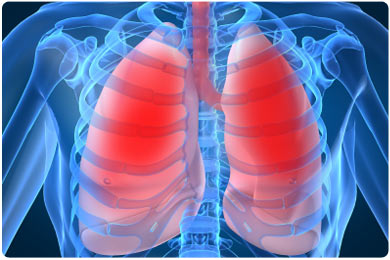COPD or chronic obstructive pulmonary disease is a group of diseases in the lungs that block the air flow making breathing difficult. COPD killed more than 2 million people in the year 2000 and the prevalence and mortality is increasing to this day. This is the reason why intense research is directed to this disease as it continues to claim millions of lives every year. It is the third leading cause of death in the US and is forecasted to be the 5th leading burden of disease in the next 6 years worldwide. This makes it an international public health concern.
Common conditions behind COPD
 Two of the common conditions that make up COPD are chronic bronchitis and emphysema. Chronic bronchitis is the inflammation of the lining of the bronchial tubes affecting the passage of air to the lungs. Emphysema on the other hand is the destruction of the air sacs in the lungs called alveoli. The bad news is the damage in the lungs due to these conditions is irreversible. However treatment is necessary to stop the progression of the disease. As the condition gets worse, symptoms can get more serious and elongated. Without treatment COPD can lead to death.
Two of the common conditions that make up COPD are chronic bronchitis and emphysema. Chronic bronchitis is the inflammation of the lining of the bronchial tubes affecting the passage of air to the lungs. Emphysema on the other hand is the destruction of the air sacs in the lungs called alveoli. The bad news is the damage in the lungs due to these conditions is irreversible. However treatment is necessary to stop the progression of the disease. As the condition gets worse, symptoms can get more serious and elongated. Without treatment COPD can lead to death.
The symptoms of COPD
The symptoms of COPD are not felt in the early stages of the disease. It is only when the lungs have already incurred much damage that symptoms begin to surface. It often starts with a persistent cough that can last up to three months every year for two consecutive years. Then there is wheezing, shortness of breath, chest tightness, excess mucus in the lungs (clearing the throats is necessary every morning), chronic cough with sputum, blue lips and nails due to lack of oxygen, frequent respiratory infections, and unintended weight loss.
Risk factors of COPD
COPD is often associated with too much exposure to tobacco smoke. Cigarette smoking can dramatically increase one’s likelihood in developing the disease. Genetics can also play a role in the onset of COPD because only 20% of smokers will eventually have the disease. Exposure to dust and chemicals at work can also lead to COPD. Age can also be a factor, with most people diagnosed with the disease are already in their 40’s.
Treating COPD
COPD is treated best with drugs like Spiriva (Tiotropium bromide inhalation powder). Spiriva can help people with COPD breath better. It is a fast relief to one of the disease’s most bothersome symptom, breathing difficulty. It is best however to consult your doctor first before using Spiriva. Spiriva opens up the airway allowing patients to breathe and steer clear from flare-ups or exacerbations.
Spiriva opens up the airway gradually allowing the lungs to improve its function overtime. This allows COPD patients to use less of their rescue inhalers as seen in the clinical trials for the drug. To use Spiriva safely be sure you are not allergic to the ingredients of the drug. If you have allergic reactions after using Spiriva you should stop taking it immediately and seek medical help as soon as possible.
Share This